Suspended Animation #292
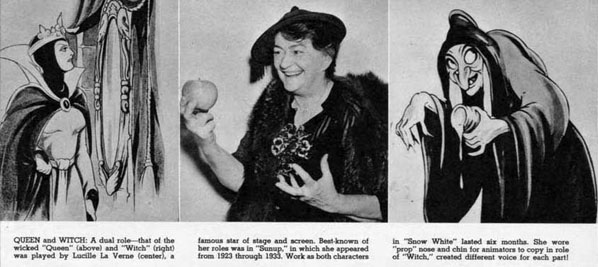
From PhotoParade Magazine
Many historians and critics believe that the real magic of the Evil Queen and the Wicked Witch in Disney’s Snow White and the Seven Dwarfs (1937) was because of their distinctive voices both done by the same actress.
Lucille La Verne was born November 7th, 1872 and died March 4th, 1945 at the age of 72 from cancer. She had just turned 65 years old when the Disney film premiered.
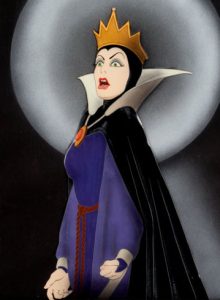 After doing the roles of the Queen and the Witch, she retired from acting and became a co-owner of a successful nightclub. She was first diagnosed with cancer in 1933, forcing her to have two surgeries. The cancer resurfaced in 1937, after which she then retired from acting and had more surgery. The cancer came back for a third time in January 1945, and claimed her life four months later.
After doing the roles of the Queen and the Witch, she retired from acting and became a co-owner of a successful nightclub. She was first diagnosed with cancer in 1933, forcing her to have two surgeries. The cancer resurfaced in 1937, after which she then retired from acting and had more surgery. The cancer came back for a third time in January 1945, and claimed her life four months later.
She was an accomplished stage and film actress with a lengthy and celebrated career in both venues when she was hired to do the voice for Disney. Her most famous onscreen performance prior to Snow White was probably the toothless, cackling insurrectionist in A Tale of Two Cities (1935).
She began acting on stage as a child and later had her own traveling theatrical company that toured the United States and Europe as well as briefly having a New York theater named after her.
She had received acclaim for her portrayal of Lady Macbeth when she was only fourteen years old and years later she played the role of Shylock in The Merchant of Venice. Although she played many lead roles, she specialized in character parts especially unlikeable old hags, slum mothers and rough frontierswomen including a hillbilly matriarch.
She had many silent film credits including Orphans of the Storm (1921) where as an old harridan she harrassed poor little Dorothy Gish. Her debut in sound films included Little Caesar (1930) with Edward G. Robinson where she was a slatternly underworld fence and Sinner’s Holiday (1930) where she played petty crook Jimmy Cagney’s mother.
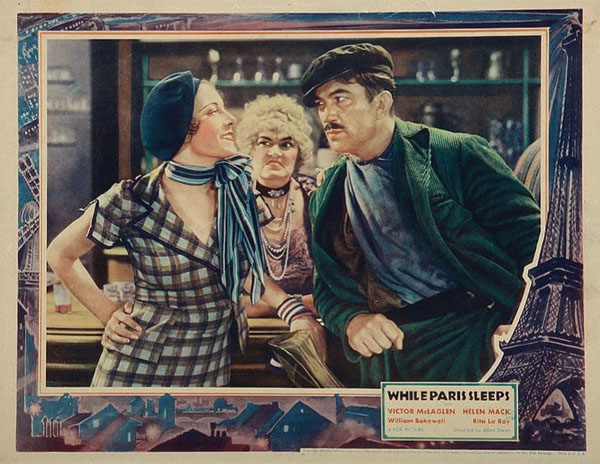
Left to Right: Rita LeRoy, Lucille LaVerne and Victor McLaglen in “While Paris Sleeps” (Fox, 1932)
Bill Cottrell remembered in an interview with historian David Johnson, “(Lucille) was mostly a stage actress. When the voices were brought in, there were radio shows that had witches in them, old crones. They all had a pattern that was a cliché, almost as if crones all talk this same way and so on.
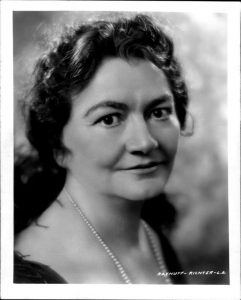 “After seeing a bunch of these, they all seemed rather uninteresting because you’d heard the same thing on radio for so many years. Lucille Laverne was brought in late one afternoon. She was almost brusque. This was a no-nonsense character. She took the script from me and read it without looking at the storyboard. You could have made a take of that voice that she read as the Queen.
“After seeing a bunch of these, they all seemed rather uninteresting because you’d heard the same thing on radio for so many years. Lucille Laverne was brought in late one afternoon. She was almost brusque. This was a no-nonsense character. She took the script from me and read it without looking at the storyboard. You could have made a take of that voice that she read as the Queen.
“She was a professional actress, and I think when she was told the Queen is a vain, imperialistic personality she visualized something. She read the lines beautifully and then when she went into the Witch with the maniacal laugh; it rang over the soundstage. It was blood curdling.
“We weren’t thinking of having one actress do both parts. With the Queen’s voice, no one read with any great authority or with anything outstanding. We made a test of her voice and ran it for Walt. He said, ‘That’s it!’
“She was rather serious and she lived in Pasadena, I believe. I enjoyed her performance very much and I appreciated it and I enjoyed being with her on the set. She was not that outgoing. I think for her it was just a business thing. Come in and shoot it and go home.”
At first Cottrell and Grant didn’t feel she quite captured the sense of menace as the Witch. Overhearing this conversation, Lucille excused herself for a moment and left the room. When she returned, she did the lines again and amazed Cottrell and Grant.
 Since they had no experience dealing with live performers, they asked what she had done in preparation outside the room in order to get into just the right sound for the character.
Since they had no experience dealing with live performers, they asked what she had done in preparation outside the room in order to get into just the right sound for the character.
Lucille smiled, “I just took out my teeth.”
Grant remembered, “Lucille was already a very famous stage and film actress. She was very willing and very obliging. When she first did the voice we didn’t think it was ‘witchy’ enough and then she came up with the idea of taking her teeth out.
“As a result of it, it gave that wet sort of sound. Her jaws collapsed and she was the witch. She was a pro. We did not have to do too many takes with her, only to try a different interpretation. She was dressed with a cape on.”
Some at the studio thought Lucille sounded too old for the queen but as director Dave Hand said, “The main point of argument is really that La Verne knows how to deliver lines. We are willing to sacrifice a little to get that correct delivery, that punch we need.”
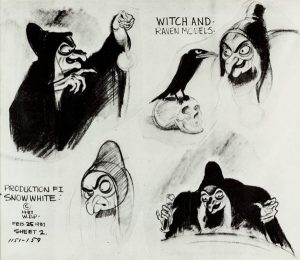 When one of the writers of the scenes suggested a change in the Witch’s dialogue, Walt responded, “All the dialogue sounded bad to me until she (Lucille) read it.”
When one of the writers of the scenes suggested a change in the Witch’s dialogue, Walt responded, “All the dialogue sounded bad to me until she (Lucille) read it.”
By having Lucille voice both roles helped unify the two characters despite the differences in their voices and performances. The crippled evil inside the Queen manifested itself physically when she transformed into the Witch.
Grant would base his model sheet for the Witch on the face of actress Lucille La Verne. She had a small build, long-hair, very intense eyes, and a husky voice and had no hesitation sacrificing her looks for her craft.
Grant had been given an interpretation of the character done early in production by artist Gustaf Tenggren but he would greatly refine it making the character very much his own design.
Grant said, “The Witch was conceived before Lucille was cast but I would say that she inspired the final model sheet. We picked up her expressions, which were very broad and caricatured. What inspired me about the character was John Barrymore in Dr. Jekyll and Mr. Hyde (1931) like the bug eyes for the Witch.”
 Lucille La Verne reprised her role as the Evil Queen/Wicked Witch in two radio performances. The Chase & Sandborn radio show starring Edgar Bergen and Charlie McCarthy on December 19, 1937 just two days before the premiere of the film featured the film’s cast including Lucille playing both the Queen and the Witch. McCarthy tricks the witch and locks her and her apples in a closet to protect Snow White.
Lucille La Verne reprised her role as the Evil Queen/Wicked Witch in two radio performances. The Chase & Sandborn radio show starring Edgar Bergen and Charlie McCarthy on December 19, 1937 just two days before the premiere of the film featured the film’s cast including Lucille playing both the Queen and the Witch. McCarthy tricks the witch and locks her and her apples in a closet to protect Snow White.
“Doc is trying to tell you the Queen is here,” said Bergen at one point. “You won’t like her. She turns into a witch and kills people. She’s jealous of Snow White and she’s trying to kill her. She’s even gone so far as to put poison in apples.”
“That sounds like a lot of applesauce, Bergen,” replied Charlie.
On The Mickey Mouse Theater of the Air episode entitled Snow White Day on January 9th,1938, the witch approaches Walt with a basket of apples and says, “Hello, Disney! Have a bite?”
After Lucille’s death many other actresses took over the role in animation, on stage and in videogames including Susanne Blakeslee and Louis Chamis.


 Jim Korkis is an internationally respected animation historian who in recent years has devoted his attention to the many worlds of Disney. He was a columnist for a variety of animation magazines. With his former writing partner, John Cawley, he authored several animation related books including The Encyclopedia of Cartoon Superstars, How to Create Animation, Cartoon Confidential and Get Animated’s Animation Art Buyer’s Guide. He taught animation classes at the Disney Institute in Florida as well as instructing classes on acting and animation history for Disney Feature Animation: Florida.
Jim Korkis is an internationally respected animation historian who in recent years has devoted his attention to the many worlds of Disney. He was a columnist for a variety of animation magazines. With his former writing partner, John Cawley, he authored several animation related books including The Encyclopedia of Cartoon Superstars, How to Create Animation, Cartoon Confidential and Get Animated’s Animation Art Buyer’s Guide. He taught animation classes at the Disney Institute in Florida as well as instructing classes on acting and animation history for Disney Feature Animation: Florida.




















































“By the pricking of my thumbs,
Something wicked this way comes!”
Lucille LaVerne played Lady Macbeth at fourteen? Wow! I’m impressed! That would have been in 1886 or ’87; I wonder if the theatre was equipped with those newfangled electric stage lights.
“Snow White” has never reminded me of Macbeth before, but come to think of it there’s certainly a lot of “Double, double toil and trouble” in that transformation scene; and by the end of it, “the raven himself is hoarse!” LaVerne might have gotten into character for the role of the witch, not only by removing her teeth, but by remembering the lines she recited as a teenager:
“Come, you spirits
That tend on mortal thoughts, unsex me here,
And fill me from the crown to the toe top-full
Of direst cruelty.”
Lucille LaVerne seems to have been the very opposite of, as Lady Macbeth’s husband said in another context, “a poor player that struts and frets his hour upon the stage, and then is heard no more.” Thanks to Snow White, “[her] name from hence immortal life shall have.”
Excellent research, Jim. I appreciate the digging you did and the interview quotes. Many thanks.
The great Janet Waldo performed the old hag voice on the classic album “The Walt Disney Players Present Dickens’ Christmas Carol” (it sounded like a less comical version of her Hogatha voice from “Smurfs”). When the album was adapted into what would become the featurette, “Mickey’s Christmas Carol,” Pete replaced the character in the graveyard scene (both speak the line, “The richest man in the cemetery!”)
Janet Waldo also voiced Minnie and Daisy for the album but was replaced by the wonderful Patricia Parris for the film (I have heard it said that some Disney staffers avoided certain actors because they didn’t want that “Hanna-Barbera sound” but it may or may not have been the case here).
Ms. Waldo’s dialogue was retained for the revised record album of “Mickey’s Christmas Carol,” which comnibed earlier sections with new film tracks. This was the only Disney record she ever appeared on in her career. She also voiced Maleficent in a Hollywood Bowl live show at some point.
Great stuff Jim — also interesting to note – Lucille had her own theater in NYC where she had several long-running successful shows. And – longtime, legendary Ink & Paint artist and actress – Gracie Godino provided the Witch’s cackle for the penultimate sequence as apparently Lucile’s cackle wasn’t ‘quite enough! Terrific stories all around!
Either Joe Grant misspoke (or was misquoted), or his memory was playing tricks on him, but John Barrymore wasn’t in the 1931 Jekyll & Hyde film. It was Fredric March. The transformation sequence was parodied in cartoons like “Betty Boop M.D.” and “Soda Squirts” (with Flip the Frog). The 1948 version starring Spencer Tracy is much more polished, but in many respects I prefer the earlier feature.
There’s a chance Grant may have been thinking of Lionel Barrymore as Rasputin in “Rasputin and the Empress” (1932), which also starred his siblings John and Ethel. The three of them were caricatured in costume from that film in the Mickey Mouse cartoon “Mickey’s Gala Premiere” (1933).
Excuse me, 1941 for the J&H remake.
A fantastic read. It’s always a joy to learn more about some of the performers behind some of the earliest Disney character voices, especially since they were working in such an untested medium.
Quite a terriff post. Thank YOU!!!
Lucille LaVerne could scare the paint off a house. https://www.youtube.com/watch?v=weS0dP0Qc48
https://www.imdb.com/title/tt0027371/?ref_=nm_flmg_act_3 !
For anyone interested in her appearance on the Chase and Sanborn Hour you can find it here at the Internet Archive
https://ia800407.us.archive.org/27/items/ChaseAndSanbornHour_201606/Chase%20and%20Sanborn%20Hour%201937-12-19%20-%20033%29%20Guest%20Jack%20Benny%20-%201st%20Half.mp3
I always think it’s interesting that film enthusiasts know Lucille La Verne primarily for two roles: one in which she can only be seen — La Frochard in Griffith’s great “Orphans of the Storm” — and one in which she can only be heard, in “Snow White.” Grant’s and Cottrell’s respect for her, and deference to her, were well founded; she had an established reputation that is perhaps not fully appreciated today. Notable among her stage credits was the 1923 mountaineer play “Sun-Up,” which was a tremendous success and ran for seven years. La Verne herself played the leading role in “Sun-Up” on the New York, London, and Los Angeles stages, then created her own vaudeville version of the play and took it on the road, *and* starred in the 1925 MGM film version! All this interspersed with other classic films, silent and sound, and all preceding her work on “Snow White.”
The line about her taking out her teeth always cracks me up.
Simpley the fairest one of all
She is absolutely perfect in A TALE OF TWO CITIES as Madame Defarge’s closest confidante memorably named “The Vengeance.” In the famous final scene, just before Ronald Colman sacrifices himself to the guillotine (“It’s a far, far better thing I do than I have ever done before….”). the Vengeance looks about the crowd for her friend, who, unknown to her, as been shot and killed by Lucie Manette’s nurse, Miss Pross. “She won’t miss this! Therese! Theresa Defarge!” It’s like watching an audition for the queen and the witch in Snow White at the same time!